Blogs

February 14, 2025
What It Takes to Be the Most Innovative EdTech Company
The Most Innovative EdTech Company changes how we learn, making lessons fun, easy, and exciting. But what truly sets an EdTech company apart? Let's find out! Smart Use of Technology The most innovative EdTech companies use the latest technology to help students and teachers. They include: AI (Artificial Intelligence) makes learning easier. It provides instant answers and creates lessons for each student.
Read More ⟶

February 4, 2025
Learning Management System for Schools: A New Way to Learn
The way we learn has changed a lot. In 2020, important aspects of education suddenly stopped working, and people started to wonder if the old way of teaching was still effective. When the pandemic hit, the learning management system for schools became essential. Schools closed, and learning moved online. This was a big change for education. Kids could learn more than what was in their books. Teachers also found new ways to teach, and parents became more involved in their kids' learning. Why is a Learning Management System for Schools Important? Just using video calls for online learning is not enough. We need something better. A learning management system for schools makes online learning good. It helps kids learn more and helps teachers teach better. Good school learning helps kids learn and grow. The pandemic made this change happen faster, but it should have happened a long time ago.
Read More ⟶

January 31, 2025
Leveraging Engaging Digital Content in a Digital Classroom
What grabs a student’s attention and makes learning enjoyable? It’s often a mix of the subject itself and how it’s delivered. In today’s digital age, educators have a powerful tool: engaging digital content. When used effectively, digital content can make subjects like math, science, social studies, and language arts more interactive, accessible, and memorable. By recognizing what makes content engaging and how it enhances teaching and learning, educators can unlock its full potential to inspire a lifelong love for learning. But before we dive in, let’s first understand what engaging digital content means. What is engaging digital content? Engaging digital content is any educational material in a digital format that captures students' attention and keeps them involved. This includes animations, videos, interactive quizzes, simulations, and gamified experiences that make learning feel more like play than work. Designed to be visual and interactive, this content caters to different learning styles, sparking curiosity and making lessons more engaging. The goal is to shift learning from passive to active. Instead of just reading about a historical event, students might watch a video that brings it to life, offering a deeper understanding than a textbook alone. Or, rather than memorizing a math formula, they can use a digital tool to solve real-world problems, making learning more relevant and practical.
Read More ⟶
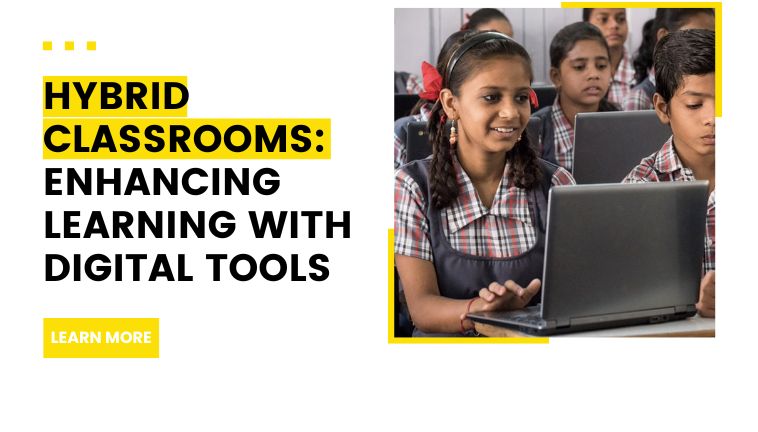
January 20, 2025
Hybrid Classrooms: Enhancing Learning with Digital Tools
Have you noticed how learning has changed in recent years? It's been quite a journey! We've gone from chalkboards to smart boards, and from textbooks to tablets. Now, we're seeing a big shift towards hybrid classrooms. What are Hybrid Classrooms? A hybrid classroom is a special kind of learning where students can learn both in the classroom and from home. It's like having the best of both worlds! How do Hybrid Classrooms Work? Imagine a classroom where students can learn together even if they are not in the same room. This is possible with the help of amazing technology.
Read More ⟶
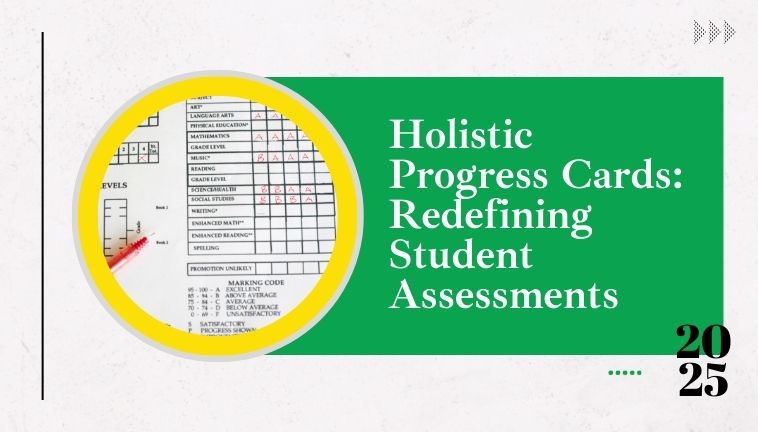
January 15, 2025
Holistic Progress Cards: Redefining Student Assessments
Education and how we assess and support our students are evolving. The Central Board of Secondary Education (CBSE), guided by the principles of the National Education Policy (NEP) 2020 , is pioneering a revolutionary approach to student evaluation with the Holistic Progress Cards (HPC). This paradigm shift in assessment is designed to nurture every student's creative potential and holistic development, moving beyond traditional rote memorization techniques to embrace a more comprehensive, learner-centric model. What is a Holistic Progress Cards? The Holistic Progress Card (HPC) is a detailed report highlighting each student's growth and individuality. It assesses learners not only on their knowledge and skills but also on their social, ethical, and emotional traits. The goal is to offer a complete picture of student development, spanning cognitive, emotional, social, and physical aspects.
Read More ⟶

January 14, 2025
How Teacher Training Can Lead Schools Into the Digital Age
Schools are changing with technology like smart boards and apps. However, these tools are only useful when teachers know how to use them well. This is why teacher training is important. Trained teachers can use digital tools to help students learn better. Why Teacher Training is Important for Digital Schools Teachers are the heart of education. They need special skills in digital classrooms to make lessons fun and effective.
Read More ⟶
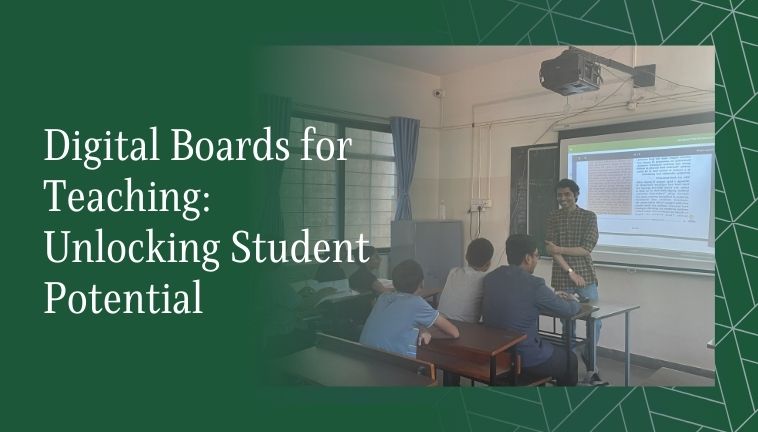
January 10, 2025
Digital Boards for Teaching: Unlocking Student Potential
Technology has become a key part of modern education in today's digital age, reshaping how we teach and learn. One standout tool is the interactive whiteboard (IWB) or digital boards for teaching, which transforms traditional classrooms and teaching methods. IWBs give teachers a dynamic way to present lessons, making them more engaging, interactive, and easy to follow. With their visual and hands-on features, IWBs help simplify complex ideas, cater to different learning styles, and make lessons more enjoyable for students. Still, while IWBs offer many benefits, their adoption isn’t without challenges. This blog will explore how IWBs enhance learning, educators' hurdles when using them, and practical ways to overcome these issues. 1. Student Performance and Achievement Technology has reshaped teaching in remarkable ways, with tools like digital boards for teaching becoming a core part of today’s classrooms. This section highlights research that reveals how interactive screens and online learning strategies can boost student achievement. Picture a classroom equipped with interactive whiteboards. These high-tech tools do more than just display lessons – they can transform how students learn. Research shows that when students use digital boards for group writing tasks, they think more critically about their work and improve skills like planning, monitoring, and evaluating. A study comparing interactive whiteboards to traditional ones found that students using digital boards performed better in a .
Read More ⟶

January 7, 2025
5 Reasons Schoolnet is the Best EdTech Company For Schools
Empowering teachers and inspiring students, the best EdTech company transforms classrooms with innovative tools, making learning smarter, engaging, and impactful. The rise of digital classrooms & digital learning has brought many positive changes but has also added new challenges. Teachers find it difficult to use digital tools, students lose interest in lessons quickly, and schools often lack the tools to make learning fun and interesting. These issues make it tough for both students & teachers. But there is good news. Schoolnet India Limited, one of the best EdTech companies for schools in India, offers solutions to make learning easier, smarter, and more exciting.
Read More ⟶
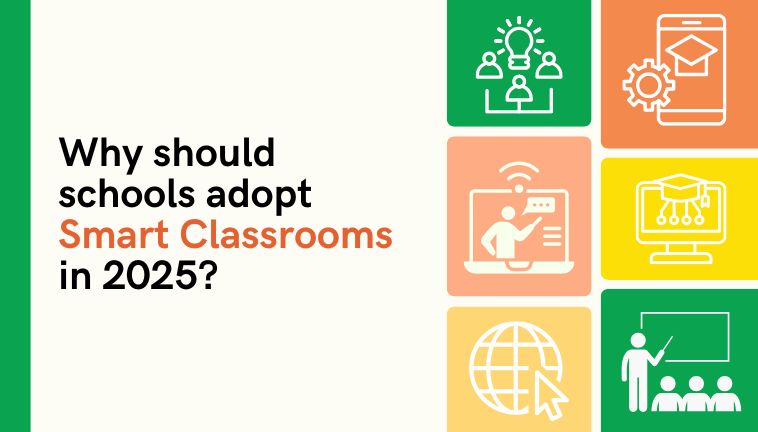
December 31, 2024
Why Should Schools Adopt Smart Classrooms in 2025?
Schools must adopt smart classrooms in 2025 to stay updated with new ways of teaching and learning. Smart classrooms have already changed education and will continue to do so. Certainly, a smart classroom is a modern space where students learn using advanced tools. It makes lessons fun, engaging, and easy to understand. Here’s why smart classrooms are a great choice for schools in 2025: 1. Better Learning with Smart Classrooms Smart classrooms make learning exciting. They use technology to explain ideas clearly. Students enjoy:
Read More ⟶

December 27, 2024
Empowering Students: Benefits of Smart Boards in Classrooms
Technology has significantly transformed traditional teaching methods, bringing about a major shift in the education landscape. One of the most remarkable innovations in recent years is the use of smart boards in classrooms. These interactive whiteboards go far beyond replacing traditional chalkboards. They are powerful tools that offer a wide range of benefits for both teachers and students. The advantages of smart boards in Classrooms , schools are truly compelling, making them a feature no school can afford to overlook. Student engagement is a major challenge in today’s classrooms. A 2023 report by Gradient Learning revealed that 80% of teachers are concerned about their students’ involvement in classroom learning. This is why technology tools that help teachers capture and maintain students’ attention are so valuable. According to a 2023 study by ZipDo, 92% of teachers believe technology boosts student engagement, and 75% think it positively impacts the overall education process.
Read More ⟶

December 23, 2024
India Top Edtech Company: Transforming Learning for a Digital Future
The Indian education sector is undergoing a significant transformation, driven by the rapid growth of technology. A wave of innovative edtech company and companies is emerging as leaders in this space, revolutionizing how students learn and educators teach. What is Edtech? Edtech, short for educational technology, encompasses the use of digital tools and resources to enhance teaching and learning. This can include online courses, interactive learning platforms , educational apps, and much more.
Read More ⟶
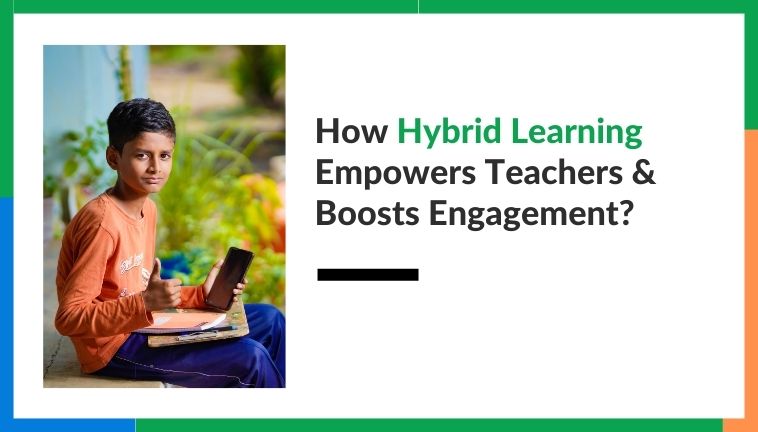
December 20, 2024
How Hybrid Learning Empowers Teachers & Boosts Engagement?
Traditional classrooms are no longer the only option for learning. Today, educators and institutions worldwide are embracing hybrid learning, a flexible and innovative approach to education. A global survey by Anthology, which included over 2,700 students, revealed an exciting shift more than 35% of students now prefer a mix of in-person and online learning. This trend shows that the future of education is evolving in promising ways.
Education is breaking free from traditional limits, with hybrid learning leading the way in digital transformation. But what is hybrid learning exactly? And how can it help teachers tackle challenges while improving the learning experience for students? What is Hybrid Learning? Learning is no longer confined to traditional classrooms. Educators and institutions around the globe are turning to hybrid-first learning as a flexible and modern approach to education.
Hybrid learning, blended learning, merges in-person and online teaching to create a versatile and engaging experience. It adapts to students’ unique learning styles, needs, and preferences by combining the personal connection of face-to-face interactions with the convenience and flexibility of online tools. Why Is Hybrid Learning Effective for Teachers? Online education allows students to learn at their own pace, making hybrid learning an effective way for teachers to tailor instruction. It allows teachers to work with small groups or offer one-on-one support, addressing each student’s needs.
In a , students take charge of their learning journey. They can access online materials at their convenience and move through lessons at their own speed. This flexibility fosters an engaging, motivating, and rewarding learning experience. Understanding the differences between hybrid, flipped, and blended learning is key, as these terms, though often used interchangeably, describe distinct hybrid learning models.
Hybrid learning combines face-to-face and online instruction, where both methods work together to enhance the overall experience.
Flipped learning is a form of hybrid learning where students access content online outside of class and spend class time on activities like discussions and problem-solving.
Blended learning, another hybrid approach, mixes online and in-person teaching with a focus on using technology to enrich face-to-face instruction. In a hybrid learning environment, students get personalized attention and can learn at their own pace. This approach helps them better understand the material and stay more engaged in the learning process. Hybrid learning gives teachers the freedom to design lessons and assess students using both online and offline methods. This flexibility helps them tailor their approach to meet each student’s unique needs. Hybrid learning gives both teachers and students easier access to information. This fosters a deeper understanding of the material and creates more opportunities for meaningful collaboration. If a student misses a class or lecture, they can simply watch it online whenever it’s convenient for them. This flexibility isn’t always available in a traditional learning environment. In emergencies like natural disasters or pandemics, hybrid learning allows students to continue their education from home, ensuring minimal disruption to their studies. Hybrid learning can help address teacher shortages in certain areas by enabling teachers to work from home and connect with more students online, expanding their reach. As teachers transition to hybrid learning, there are several strategies they can use to ensure success for both themselves and their students. Teachers should communicate regularly and clearly, setting expectations for both online and offline work. Being available to answer students' questions is also essential for a smooth hybrid learning experience. Take advantage of the many tools and resources available to support hybrid learning. Online collaboration platforms like Google Docs and Canvas can help streamline communication and make it easier to provide students with timely feedback. Each student learns differently and at their own pace. Stay flexible in your teaching methods and be ready to adjust your plans to meet the diverse needs of your students. Provide options for asynchronous, or self-paced, learning to ensure students can continue their studies without interruption, especially during internet outages or other technical issues. Video calls offer students a way to stay connected and engaged with their teachers and classmates, helping to bridge the gap between online and in-person learning. Create a classroom environment that fosters connection by setting up group workstations or providing laptops to all students, encouraging collaboration and engagement. Before the school year starts, take time to familiarize yourself with the tools and resources you'll be using. This will help reduce confusion and frustration, ensuring a smoother experience for both you and your students. Keep students organized by providing a clear schedule or timeline of due dates. Posting this information in visible places, like Canvas or Google Classroom, helps students stay on track and manage their time effectively. Providing learning activities and course materials ahead of time helps students become familiar with the content, reducing confusion and setting them up for success. Online learning can feel isolating for some students. Make it a point to regularly check in with remote learners, offering support and connection for their well-being. Every student learns at their own pace. Don’t hesitate to slow down and offer additional support to ensure everyone can keep up. Use your learning plan to build connections. Get to know your students as individuals and allow them to see you as their teacher beyond just the curriculum. Students engage more when they’re enjoying themselves. Don’t be afraid to experiment with new teaching methods and strategies to make hybrid learning fun and engaging. In recent years, online classes have grown in popularity, making hybrid instruction more common. Successful hybrid learning blends online courses with in-person instruction, offering a well-rounded educational experience.
However, preparing for exams in a hybrid learning environment can be challenging. With the right tools, strategies, and solutions, students can navigate this process more effectively. provides online solutions such as teacher training, Geneo Assessment Reports, gamified quizzes on , and more. These resources help students focus on areas where they need the most support, offering personalized instruction to boost their exam readiness.
Read More ⟶
© Schoolnet India Limited





